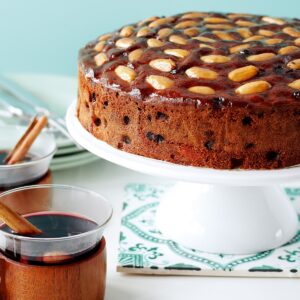
Food prices are on the rise, but you can still keep meat on the menu. Here’s how.
By getting creative with your cooking and shopping wisely, there’s no need to compromise on meat when your purse strings tighten.
12 practical money-saving tips
- Be like the Japanese and think of meat as a garnish, not a food that takes up half the plate. Less is more, and it’s all about quality not quantity.
- Adjust your servings. A serving of meat is 125-150g raw meat per person, or the size of a person’s palm. Be aware that meat shrinks during cooking by about 1/4 to 1/3 of the raw meat weight.
- Try shopping at the butcher’s. This can often be cheaper than the supermarket, as you’ll be able to take advantage of their special deals. Butchers are great at giving cooking advice, too.
- Choose cheaper cuts of meat and change the way you cook. Quick-cooking meat is usually more expensive, but if you are prepared to take your time, you can save money with cheaper cuts, which are best for slow cooking.
- Make the most of a slow-cooker and experiment with cheaper cuts of beef, lamb and pork. Slow-cookers do a great job of this while you’re at work or school.
- Make a meal of mince. You may have been put off mince in your student-flatting days, but it’s time to rediscover this versatile cut.
- Choose lean cuts with no waste if you’re buying steaks. The more fat you cut off, the more waste you’re paying for.
- Consider buying in bulk and splitting with friends or family. Remember when families used to buy a whole or half a beast? If you’ve got the freezer space or a friend or family to share it with, this could be worth investing in.
- Be on the lookout for specials. Supermarkets and meat outlets are competing for your hard-earned dollars, so make the most of meat specials and if you can, buy double quantities and freeze.
- Extend your meat dishes with healthy pulses. We’ve said it before but it’s a great tip: a cup of red lentils added to a kilo of mince or diced stewing meat will make a meat dish go twice as far and give it a real health boost.
- Pre-crumbed, pre-chopped and prepared meats cost more as you pay for the processing.
- Cook in bulk and freeze or re-use roasts, stews and casseroles. Get creative in the kitchen.
Is eating meat bad for the environment?
In these days of climate change and a drive towards sustainability, you may hear or read the advice ‘eat less meat to save the planet.’ But in New Zealand, does this hold true? Beef and Lamb New Zealand CEO Rod Slater says it’s not as cut and dry as people would have you believe.
“Even former Beatle and well-known vegetarian advocate, Sir Paul McCartney, has joined a growing band of activists using the meat industry as the latest scapegoat in the climate change debate,” he says.
Keen to set the record straight, Slater says eating less meat will not save the planet, especially here in New Zealand. Most criticisms aimed at the meat industry relate to intensive feed-lot systems used overseas, where livestock is raised indoors. The majority of New Zealand’s beef and lamb livestock, however, are raised on natural pastures with no intensive farming.
Compared to agricultural practices in Europe, North America, and North Asia, Slater says New Zealand agriculture is energy efficient and less reliant on energy input, fertilisers and pesticides.
“We are also part of initiatives to reduce water use and improve water quality and our parent company, Meat & Wool New Zealand, has invested in research and a range of tools and information that support sustainable on-farm practices,” he says.
So if you enjoy a steak, there’s no need to cut meat from your diet. Just make sure you’re eating local, New Zealand product.
Smart ingredients to substitute and save
- Beans, chickpeas and lentils are useful for making casseroles and mince-based dishes go a lot further.
Pork and bacon hocks and beef soup bones are cheap and give plenty of meaty flavour to a big soup. Cook these meats long and slow with veges and a mix of soup beans. - Good quality sausages are a great way to get meaty flavour into risotto, pasta and stews. Pay more for fewer, well-flavoured sausages and allow half a sausage per person in mixed dishes.
- Lamb knuckles are usually the front legs. They are a little less meaty than the back legs, which are usually sold as lamb shanks. But knuckles cook and taste the same as lamb shanks, and are often much cheaper!
Healthy swaps that cost you less
| Instead of this | Use this | Good to know |
|---|---|---|
| Pre-diced premium beef | Chuck steak |
|
| Beef rib-eye roast | Beef topside roast |
|
| Lamb shanks | Lamb knuckles |
|
| Pre-diced chicken | Skinless chicken breast |
|
www.healthyfood.com










